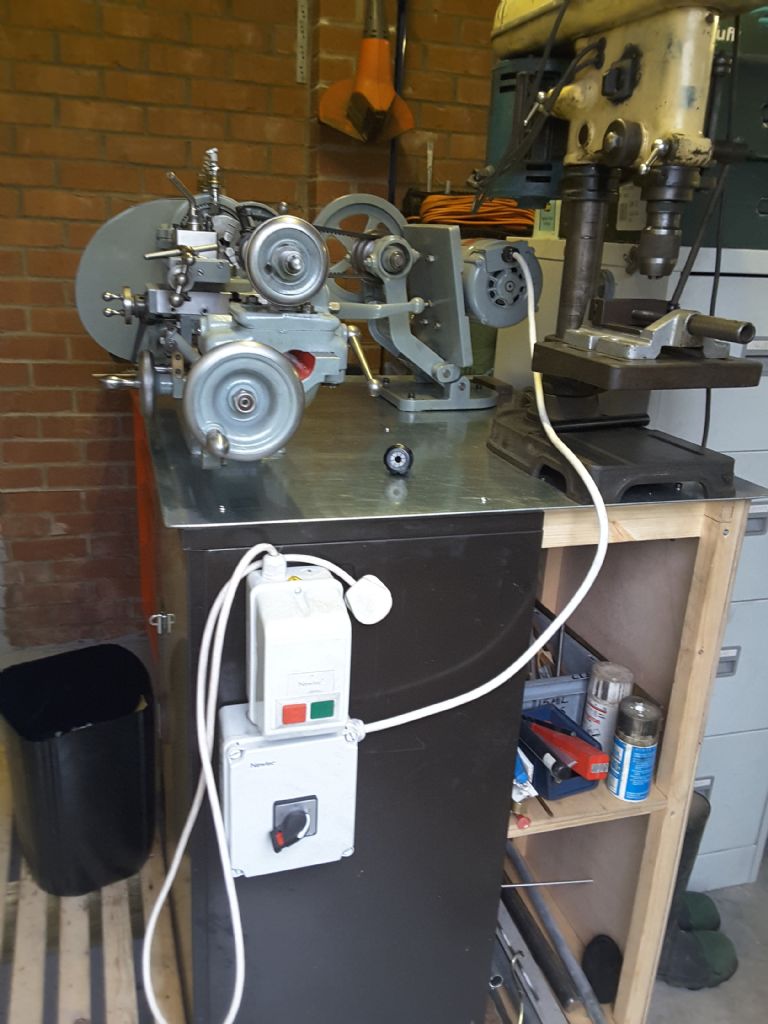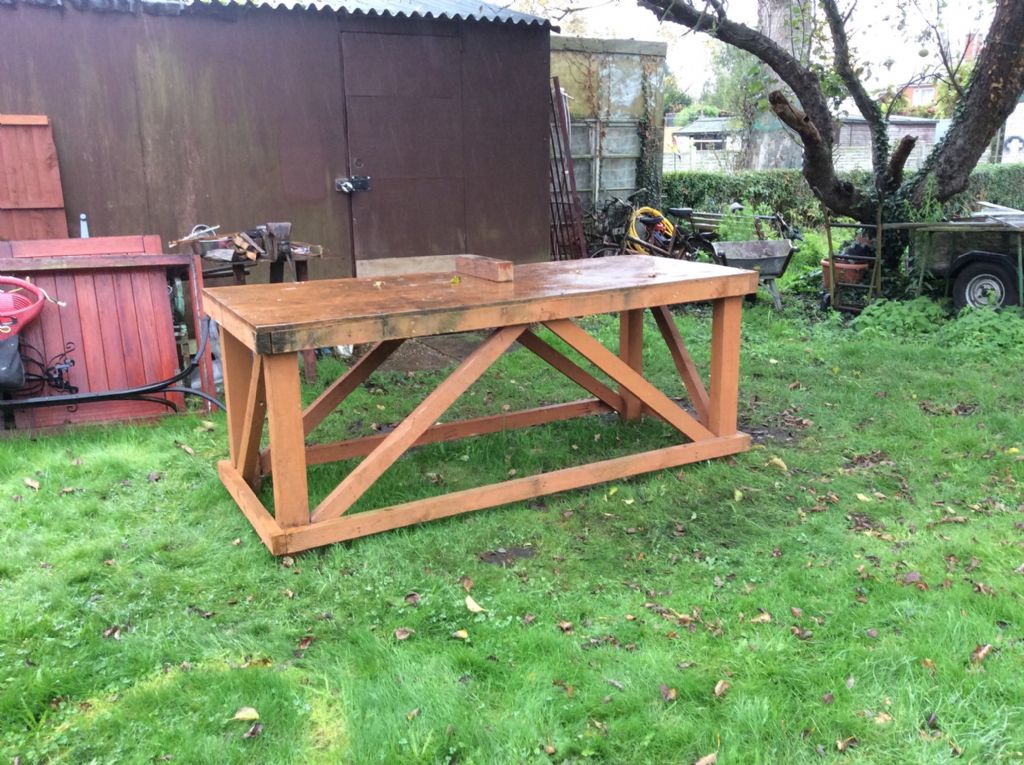FWIW, whatever bench is used to mount the lathe, it needs to be rigid.
Risking a lot of flack, the ML7 is not a terribly rigid machine, so a bench that flexes will not improve accuracy.
There is a lot to be said for the proverbial "Brick Mausoleum"! An overly substantial bench will be no problem for the machine. The converse is not true.
L H Sparey advocates a substantial wooden bench. My personal preference would be for a steel bench made from substantial (at least 40mm ) angle iron or steel box section. (But that would not be so easy to dis assemble and transport ). One or more shelves, beneath would add rigidity, as well as providing useful storage space. (There will never be enough! )
The top to any bench could well be worktop, thickest that you can find, to maximise rigidity.
If you are worried about oil, or coolant getting into the worktop through the mounting holes, you could always seal around the bolt holes with silicone before lowering the Myford into place.
As an aside, a friend had a lathe which had once been on a warship. The bench was made of HEAVY channel section, with six legs. It was heavier than the lathe. Apparently the Naval rule was that the workshop equipment had to be able to withstand the effects of a broadside!
HTH
Howard
 Pete..
Pete..



![img_20151108_141159657[1].jpg img_20151108_141159657[1].jpg](/wp-content/uploads/sites/4/images/member_albums/45933/772370.jpg)
![img_20151017_114645745[1].jpg img_20151017_114645745[1].jpg](/wp-content/uploads/sites/4/images/member_albums/45933/772369.jpg)
 Is the heavy duty bench in the link above (65kg, steel, 1.5m x 600mm surface) OK?
Is the heavy duty bench in the link above (65kg, steel, 1.5m x 600mm surface) OK?

